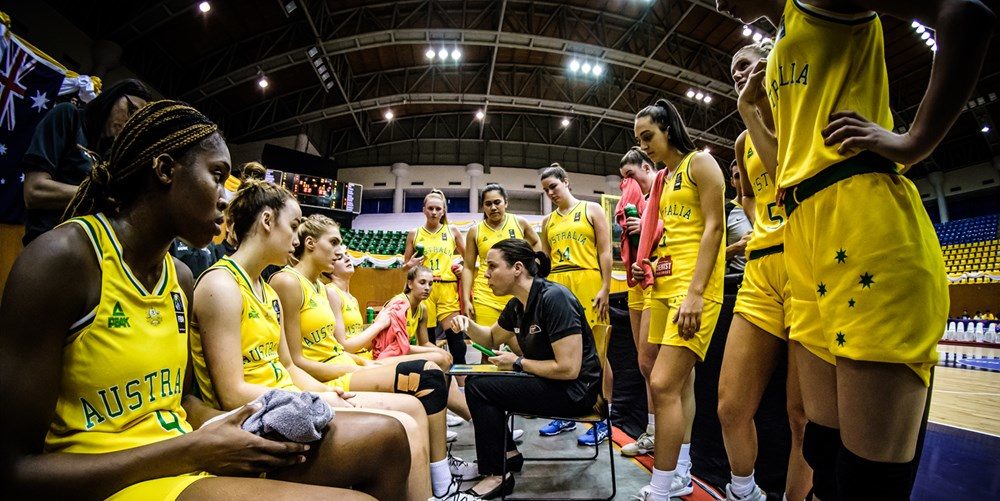One of the biggest growth areas in the game in recent times has been the use of advanced statistics, analytics and data. In a game that already valued statistics and numbers, this aspect of the sport has perhaps demonstrated the biggest growth in the last five years.
There are now numerous web-sites and programs that churn out all sorts of advanced statistics as coaches search for the data that provides a point of difference or allows for more in depth performance analysis.
The challenge for coaches at the youth level who do not have resources to invest in this area is managing the cost-benefit and ensuring energy continues to be focused on what directly impacts winning and player development.
So how does the youth coach wade through the huge amount of statistics and data that is accessible and decide what best suits their team or program?
What do you prioritise?
Coaching is about priorities and when it comes to the mountain of statistics, deciding on your key areas of reference is crucial to being efficient in this area.
If rebounding is a key area of focus for you as the coach, weight the various statistics around that part of the game as important to you, your staff and the players.
Rather than just total rebounds, look into rebounding percentage, rebounding differential, percentage of contested rebounds, rebound “rate” or rebounds per minute played.
University of Pennsylvania head Coach Steve Donahue talks about the “10-10-10 of winning”. His formula for winning at the collegiate level is making 10 or 3-point shots, committing less than 10 turnovers or restricting opponents to less than 10 offensive rebounds.
The college game is obviously different to the FIBA game, but this a sound way to apply basic statistical information and equate it to winning. In the FIBA game, with higher pace of play and the 24 second shot clock, these numbers would be slightly different and it would be interesting to see how coaches would equate their statistical formula for winning.
https://twitter.com/SynergySST/status/1393986256787365893
Charting the possession game –
Many basic basketball statistics are “outcome based” and while that provides a valuable snapshot from the box score, this data doesn’t always paint the picture of what is impacting winning.
One of the key themes for Australian teams over the journey has been winning the “possession game”. That is, ensuring that the ball is gold; that everyone understands what is required to dominate possession at the offensive end of the floor.
Many coaches will see this as limiting turnovers, winning the rebounding count and being the first to any loose ball or contested possession. To use an AFL term, win the battle when the ball is “in dispute”.
The possession game is certainly all those things, but what other data can we use to measure how our team is going in this important area.
- Percentage of turnovers per possession
- Rebounding percentage
- Assist to turnover ratio
- Total passes for your team
At the peak of their powers in the middle of the last decade, the San Antonio Spurs averaged more than 320 passes/game, created more than 32 ppg from spot ups and averaged some 54% of their scoring from assisted baskets.
At the youth level, coaches don’t have a raft of statisticians to chart all of this data, but a good start is having someone count the number of passes make in the “live” settings of practice and then chart turnovers in the same setting.
Build to having someone chart total passes in the game and likewise, compare that to how many turnovers the team commits. Rather than simply highlighting how many turnovers a team has from the box score, this will provide some context around how your team is moving and caring for the ball.
At the last Australian Under 16 Junior Championships, nearly a third of total possessions for the championship ended in a turnover. That statistic alone would indicate we as coaches need to spend more time on passing, catching, pivoting and leading.
Simple usually relates –
At any level of the sport, simple if often best. While we now have a raft of advanced statistics to apply, the basic information available from the box score or from an assistant coach taking one of two key stats is still valuable.
Think about what are the two or three numbers on the quarter or half-time box score that you circle as an assistant coach before handing to the head coach? What are the stats your eye goes straight to as a head coach when handed the box score?
It is not always about numbers. Blend is a big word in modern coaching, what is our blend of –
- Blend of 3-point shots to free throws
- Assist to turnovers
- Points in the paint
- Points off turnovers
- Points off rebounds
In more simple terms, what are we charting that impacts winning? In the Opals program through the successful 2006 FIBA World Championships and 2008 Beijing Olympics, the coaches charted deflections, with 10/quarter the number which had direct correlation to winning. This stat was prioritised, communicated to the players and was a direct measure of defensive hand pressure and pressure.
If you are a pressure defensive coach, steals and deflections may be highly rated statistics for you and your staff. Others may weight defending the 3-point line or the foul discipline around keeping opponents off the free throw line.
Whatever you value and want to effectively measure, ensure you are communicating this to your players and staff. Perhaps the biggest thing to remember is the importance of coaching people, not numbers.




Leave a Reply